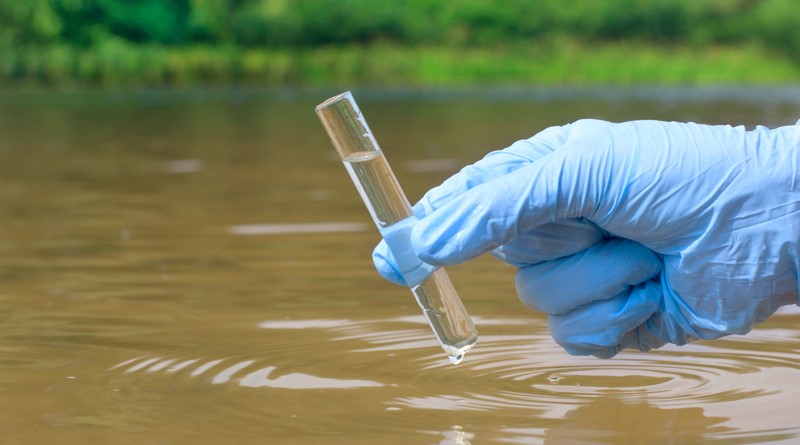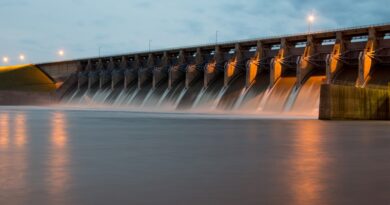Water needs to be cured through ecological means

Madhukar Swayambhu
There is a huge drinking water crisis across the globe and it is worsening by the day. It is envisaged that in coming years, the situation will get even graver.
We know that from the United Nations to governments to local bodies & corporations – everyone has been working towards conservation and restoration of water bodies while making extraction sustainable, but if we look at the world in last fifty years, the situation seems to have worsened?
People, plants and animals in growing numbers are parched today. There’s rapid desertification, despite efforts to restore.
The BIG question is WHY?
Are all our efforts failing? If no, then why is the situation worsening? If yes, there has to be something that is grossly wrong in our efforts across the globe. To ensure that in future, efforts on this front bear fruit, one has to look at both the approach and the process followed so far:
a) Verify processes: To understand our processes and efforts that we are taking for correcting the things and making water available across the globe in abundance.
b) Verify approach: To understand the basic philosophy of the processes, because not one or two but all seem to be going wrong.
Let’s begin with the processes first.
By and large, across the globe people adopt four processes to conservation water, namely:
i) Rainwater harvesting: Collecting, dumping and storing rainwater so that it gets soaked in the ground and helps enriching the underground aquifer.
ii) Plantation drives: Planting more trees towards creating a greener planet.
iii) Restoration of water bodies to make water available for potable and non-potable uses.
iv) Setting up sewage or effluent treatment plants: Wastewater (which is largely fresh Water) could be reused, reducing the extraction of more groundwater.
Now let’s analyse each of the above.
1: Rainwater harvesting: Before we attempt to understand the reasoning behind failure of this process, it is important to know the forces of nature that would make it happen.
There are two key things to be clear about, in order to understand this phenomenon. One is the underground aquifer while other is the soil moisture. Both are water, but the former is below the soil, while the latter is within the soil.
When we say harvesting, the basic idea is to be able to use it later. Now both are used in different ways. The soil moisture is used by the plants to grow and the underground aquifer is the water that we take out for usage through borings and tube wells.
The basic apparatus that we install for rainwater harvesting is pipelines from the rooftops of buildings to a pit installed with a tank with holes in the side walls. Now when the rainwater comes in to this tank through pipelines, it gets leaked and absorbed by the soil around the holes, and contributes to the soil moisture, but does not reach the aquifer below and does not raise the water table. Thus, the idea to recharge underground aquifer fails.
But, it does help in increasing soil moisture. That is the reason why, all plantation drives succeed in the regions where rainwater harvesting is done successfully. This brings us to the second method;
2: Plantation drives: The idea is indeed wonderful from the perspective of dealing with air pollution.
But, plants have very limited role in water generation. Also, plants are consumers of water. That is why, plantation drives fail when there is no provision for adequately watering them. In our quest for economic growth, we hâve spoiled the ecology in soil, water and air that was sufficient for growing all the plants in any particular agro-climatic zone.
With excessive chemicals in our routine life and agriculture, ecology has been hit.
3: Restoration of water bodies: These surface water bodies have been the natural rainwater harvesting apparatuses for years. But we have spoilt them to the extent that they are no more effective now.
We did it with sludge. Today we have made water as the de-facto waste transport medium. All the waste and dirt is washed away with water, be it on cars or clothes, dishes to dandruff. All sewage on the planet is basically 95 per cent fresh Water and just five per cent solid waste that we have added through anthropogenic activities.
So, we got this idea of separating sludge from sewage and making it fresh again. But, this is just a half cooked idea. What will we be doing with the sludge – making compost or putting it in a landfill?
It is only we humans who generate waste. We are even possessive about our waste and want to preserve it. In nature, there is nothing known as ‘waste’. Everything that comes out of nature goes back to nature.
Today, the methods that we adopt for restoration of water bodies can be categorised in three domains – namely, physics, chemistry and biology.
i) Physics: This is a three step process – decantation, de-sludging and refilling. Flaws in the process include wastage of water, sludge management hassles, disturbing the biodiversity by mechanical dredging, and wastage of time, energy and money. And, despite all this the water body still remains where it was. Because, mechanical removal of sludge can’t differentiate between sludge & silt and without silt the aquifer recharge wouldn’t happen.
ii) Chemistry: Every chemical reaction has it own residue. In quest of solving the sludge problem, we end up killing some of the microbes as a side effect of the chemical reaction, which again harms the ecology.
iii) Biology: This is primarily done by introducing an invasive species in the ecosystem. This is again not a sustainable practice. Also, be it the phosphates & nitrates consuming weeds on some floating islands or cyanobacteria treatment, both are foreign entities to the water body. Thus, they act as invasive species in ecological terms.
The only sustainable way of water body rejuvenation is an ecological restoration in which sludge is consumed in the natural process, not removed physically, ensuring zero wastage.
In any process we do, if we are left with any residue or waste that can’t be a natural process. And, no artificial process can be ecological. It could be good for a stop gap arrangement, but definitely not maintainable.
The fourth activity that we do is practically a corollary of the third only.
4: Sewage treatment plants: Here again, we adopt only the above mentioned three processes. The difference is just the natural water body and man-made physical structure of a treatment plant, be it STP or ETP.
It’s high time for us to understand that water pollution is not a physical or chemical or biological problem, but rather an ecological problem.
There’s ecology in water. Natural water bodies have life in it, it is an ecosystem in which millions of beings survive. How can it be sorted in to mere chemicals? Every human body is a chemical factory that secretes chemicals based on emotion and thoughts, which means every time you do a chemical analysis you will get different results, unless the body is a dead body. And the same is true of water.
You don’t clean sick people, you cure them. Similarly, water needs to be cured, not cleaned. And the only possible way out is an ecological treatment.
Just imagine this – with your thought and emotions, you can bring in chemical, physiological and biological changes in your body. With your thoughts and emotions, you can change the chemical secretion within the body. That means, your body chemistry can be corrected by yourself, if you have control over your mind.
The same is true of water.
(The author, an IT professional for 25 years, has interests in environment, ecology, Vedic sciences, Sanskrit and Indic knowledge.)
(Disclaimer: India Water Review does not take any responsibility for the views expressed in the article. The article published also does not in anyway reflect the opinion of India Water Review.)”


